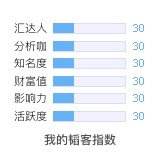Weak-Form Efficiency in Currency Markets (zz)
Weak-Form Efficiency in Currency Markets (zz)
Weak-Form Efficiency in Currency Markets
Financial Analysts Journal Kuntara Pukthuanthong-Le and Lee R. Thomas, III
May/June 2008, Vol. 64, No. 3: 31-52
(doi: 10.2469/faj.v64.n3.5)
View Table of Contents
Abstract
Many past studies have found that currencies trend, so technical trading rules produced statistically and economically significant profits. In other words, foreign exchange markets were weak-form inefficient. The study reported here reexamined this phenomenon with use of a new database of currency futures for 1975–2006 that includes old and newly liquid currencies. The findings from the recent data are contradictory. The profitability of trend following eroded for major currencies and their associated cross exchange rates around the mid-1990s. Newly liquid currencies after 2000 do trend, however, just as major currencies did in earlier years. The evidence is consistent with early weak-form inefficiency followed by vanishing trends as traders learn and adapt their strategies.
Summary
Trend following was a successful strategy for the major currencies and their associated cross exchange rates during the 1970s and 1980s and, for certain currencies, during the 1990s. Since 2000, however, trend following in the major currencies has yielded poor results, and the results are broadly similar for the major currencies’ cross exchange rates. Practically speaking, trend trading appear to have been unprofitable in recent years, which supports the assertion that the major currency markets have become weak-form efficient after many years of inefficiency.
We do not know why currencies trended in the first place. One hypothesis is that early markets were inefficient simply because inefficiency is a characteristic of immature markets. But we bring additional evidence to bear on this open question.
First, cross exchange rates show the same pattern as dollar exchange rates—profits in the early years followed by an erosion of profits in later years—making it unlikely that the dollar exchange rate results are a consequence of chance or implicit data mining of the 1972–2000 period. And the results also fail to support the hypothesis that trending was largely a result of central bank intervention.
Second, we find that although trending in major currencies has vanished, newly liquid exchange rates have been very profitable for trend traders in recent years. This finding suggests that trending is a feature of all newly trading currencies, and based on the experience of the major currencies, we would expect these profits to vanish in time.
Supplemental Material
Weak-Form Efficiency in Currency Markets (Supplemental Material)
Topical Index Keywords
[ 本帖最后由 管理员No.1 于 2008-6-13 10:46 编辑 ]










